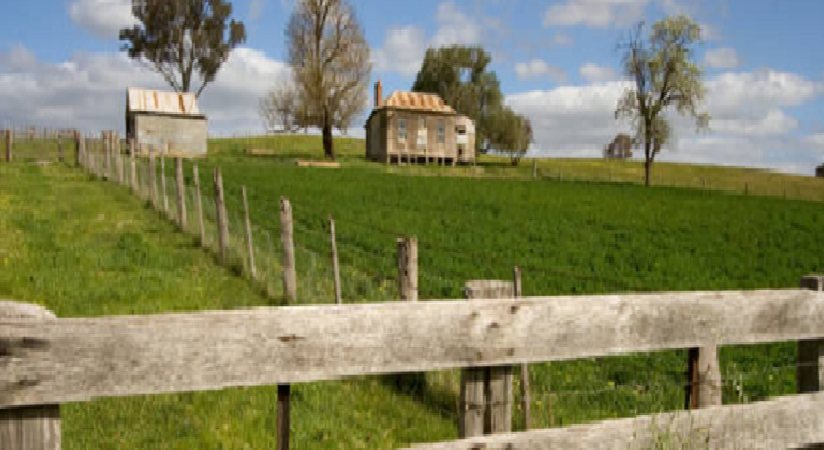All of Tasmania, South Australia and the NT are considered to be regional under Australia’s immigration program
Demographers say the policy pushes migrants to to to places where they’re not able to economically support themselves
Tasmania’s Migrant Resource Centre says the state needs more migration to combat its aging population
Apple Wang is a trained accountant who moved from China to Tasmania after studying in Melbourne.
She is among the international migrants who have moved to Australia with a skilled regional visa.
Despite nine months of looking she was unable to find a job in her field in Hobart and so turned to driving for Uber to make end’s meet.
“You can get by driving Uber, you earn about $15 an hour, you can get some food on your table,” Ms Wang said.
“But you don’t have anything left, to be honest.”
The visa cost her thousands of dollars in fees both to the Government and the migration agent she used.
“It’s the state nomination visa. So as part of the visa obligation I have to stay here for a minimum two years,” Ms Wang said.
Australia’s immigration program actively encourages migrants to move to regional areas through the allocation of visas.
Many visas lock the migrant into living and working in a regional area for multiple years.
But demographer Lisa Denny from the University of Tasmania says the program is flawed.
“We need to shift the focus on supplying migrants and supplying people and actually start looking at where the demand actually is,” she said
The federal and state governments say the program pushes migrants to areas where the population is declining, to plug labour shortages and to help stimulate economic growth, but Dr Denny said it did not work.
“You can’t push migrants with skills and qualifications to an area where there are no employment opportunities for them,” she said.
“You can’t push a migrant to somewhere where they’re not going to be able to economically support themselves.”
The definition of what counts as ‘regional’ differs around the country.
In the bigger states of NSW, Victoria and Queensland, it’s those areas outside the major cities.
But in the case of Tasmania, the entire state is classified as regional and most international migrants move to Hobart.
What constitutes a regional area?
State Regional areas
New South Wales Everywhere except Sydney, Newcastle, the Central Coast and Wollongong
Northern Territory Everywhere in the territory
Queensland Everywhere except the greater Brisbane area and the Gold Coast
South Australia Everywhere in the state
Tasmania Everywhere in the state
Victoria Everywhere except the Melbourne metropolitan area
Western Australia Everywhere except Perth and surrounding areas
In the 12 months to June 2018, 2,580 international migrants moved to Tasmania, a 10.2 per cent increase on the year before. Of that, 5.4 per cent were on a temporary skilled migrant visa, and a further 9.7 per cent were permanent skilled migrants.
Hobart’s population soared 1.6 per cent in the year to June 2018 which is contributing to a host of problems.
Dr Denny said Hobart was experiencing a housing crisis, with the lowest vacancy rate in the country causing rents to skyrocket.
“We are in a critical area of housing stress for Tasmanians,” she said.
“[There’s] an inability for southern Tasmanians to not only find a house to rent but also to buy that’s affordable and within commuting distance of their jobs, or their schools.
“And that is attributed to population growth being driven by migration-led growth.”
At 6.7 per cent, the unemployment rate in Tasmania is also much higher than the national average of 5.2 per cent, which indicates jobs are hard to come by for locals, let alone for migrants.
“The high levels of migration that we have to Australia increases our supply of labour,” Dr Denny said.
“The Australian economy is not performing well and therefore we have what I refer to as an oversupply of labour and people looking for work.
“That results in low wage growth, it results in higher levels of underemployment, and they’re the costs to people that aren’t necessarily measured or understood when we talk about our high levels of population growth and our higher levels of migrants, particularly temporary migrants.
“At any one time we have 1.2 million people in Australia on temporary visas that have work rights.”
Lack of jobs drives accountant interstate
Ms Wang said it was her migration agent who suggested she move to Tasmania as part of the regional skilled migration program.
Not only has she struggled to find suitable work, but Ms Wang said she had been surprised by how expensive it was to live in Hobart.
She struggled to get a place to live with the housing shortage and said her cost of living was higher than it was in Melbourne.
“In Melbourne, you can find cheap meals. Here you can’t find a meal for $10 that can feed you, there’s nothing like that,” she said.
“In Melbourne, you can find $10 meals and there’s maybe five or 10 options.”That’s the difference to big cities, there’s more variety because of the competition.”
Ms Wang has now managed to nab a job — in Adelaide.
So, she’s had to pack her bags to head to another capital city classified as regional.
“I’ve done the best to contribute to this city, I drove 12 hours some days sometimes up to 60 hours a week,” she said.
‘Tasmanian job market to blame, not immigration policy’
Dr Denny said the setup of the regional visa program encouraged people to move to Tasmania, but it did not mean they would stay put.
Hobart’s population is booming, is Launceston being left behind?
The city of Hobart is sprawling out when experts say it should be moving skyward
How Tasmania’s job market forced one accountant to turn to Uber
Tree changers head for Tasmania’s north-east to find a haven from city living
“Often [Tasmania] is considered a point in order to get to somewhere else in Australia — it is a pathway,” she said.”That is something that we as Tasmanians will need to accept as well.
“There are aspirations for people to live in larger cities where more employment opportunities are or where their cultural bonds already exist as well.
“[Tasmania] is a place to come to as a purpose of getting permanent residency in Australia.”
Michael Bailey, the chief executive of the Tasmania Chamber of Commerce and Industry, said Tasmanians were supporters of the skilled migration program.
“We’re a state that’s really seeking a greater population, and we want that population to be a skilled population,” he said.
But he admitted it was often hard for those who move to the state to get jobs in their field because of the nature of the Tasmanian jobs market.
“To me it seems astounding that a qualified accountant has had to move to another state to find [work],” he said.
“To me, that’s a failing of internal processes within Tasmania.
“It’s at times a very difficult market to break into unless you know the right people, the majority of our jobs aren’t advertised at all, they tend to flow across communities.
“We need to work harder as communities to break down the barriers that are clearly in front of people with skills, whether they be from migrant or from local background.”
Mr Bailey agreed the current set-up of the regional visa program encouraged migrants to move to Hobart over other smaller towns in Tasmania, and said Hobart should potentially be carved out of the regional system.
“We’ve seen the population of Hobart increase significantly over the last few years and the remainder of Tasmania hold stable or decrease a little bit,” he said.
“We need to begin to look at Tasmania differently from metropolitan to regional.”
Alison O’Neill, chief executive of the Migrant Resource Centre, said that with an aging population, Tasmania needed more migrants.
“We are a state that is aging, having people come here through different migration streams enables us to have this sort of longer-term economic benefit,” she said.
Tasmania Migrant Resource Centre’s Alison O’Neill
“There’s definitely opportunity to turn it into a positive and retain people here.
This is actually a negative investment to bring people here and then see them transition out into other states because we’re missing out on the future.”
Ms O’Neill agreed Hobart was struggling with its population boom.
“Housing stress, affordable housing, traffic … we’re all experiencing it on a day-to-day basis,” she said.
“Perhaps an increase in population does actually cause that to become more obvious to those around, but people that are coming into migration streams are facing exactly the same problems.
“They’d like to be able to acquire affordable housing, which is close to their job and when their children go to school.
“I don’t think it’s necessarily a problem that’s different to what’s happening in Victoria or New South Wales.”
In a statement, a Home Affairs spokesman said migration program was designed to “achieve a range of economic and social outcomes”.
“A wide range of factors are considered including stakeholder views, immediate and forecast long-term social and economic trends, and the family reunion needs of Australians.
“There will be greater incentives for regional employers to nominate skilled workers, including access to additional regional occupations and priority processing of regional visa applications.”


